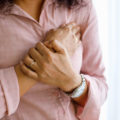Is sugar making us ill?

The allegations against sugar are pretty serious. What is certain is that we all eat too much sugar. And it’s a truism that too much of anything, whether it’s alcohol, smoking, meat, etc., is bad for us.
But should we leap to demonise sugar? Many researchers agree that excessive sugar consumption can lead to obesity and, as a result, various diseases such as diabetes, cardiovascular disorders, heart attacks, vascular damage, kidney damage, nerve damage and strokes.
The sugar mountain
Statistically speaking, each German consumes 34 kilos of sugar per year. And that doesn’t include honey or sugar additives in the form of syrup, glucose and fructose in juices and canned fruit. That accounts for another 10 kilos. So that’s a good 44 kilos of sugar in total – a sugar mountain! Just for comparison: two full cases of water or beer weigh 34 kilos.
100 grams of sugar contain 387 kilocalories and no other nutrients or vitamins. So that’s around four kilocalories per gram. An adult who consumes 2,000 kilocalories per day shouldn’t consume more than 50 grams of sugar per day on average. But that’s not so easy to stick to.
The recommendation from the World Health Organisation (WHO) is even lower, namely a maximum of 25 grams of sugar per day. However, recommendations from institutions such as the WHO or the German Nutrition Society (Deutsche Gesellschaft für Ernährung, DGE) only refer to the maximum sugar intake. The WHO and the DGE do not provide a recommendation for the maximum daily consumption of sugar found naturally in fruit and vegetables.
When does sugar become unhealthy?
As an example: a 250 ml glass of coke contains 27 grams of sugar. Half a litre of Fanta or Sprite in Germany contains 45.5 grams of sugar. The energy drink from market leaders Coca-Cola contains 83 grams of sugar. According to a new study by the Foodwatch consumer initiative, this makes it the sugariest drink available on the German market.
Soft drinks are genuine sugar bombs. Politicians in Germany have so far rejected a tax on sugary drinks as seen in some other countries. Their arguments: this is not going to solve the issue of malnutrition. In addition, the taxation of a single foodstuff is not expedient. Instead, the German Federal Ministry of Health is relying on voluntary action by the industry and educational content on the subject of healthy eating.
Special taxes on sugary drinks have existed for a few years in Ireland, Portugal, Estonia, Belgium, Norway, Mexico, South Africa and France, and in 2018 the UK joined them. The sugar tax in the UK has resulted in the sugar content in British drinks being reduced by 30 percent, the NDR reported.
The broadcaster also points out that many people underestimate the sugar content of fruit juices and smoothies in particular. Some smoothies even contain more sugar than cola, depending on the type of fruit.
Better to be unhealthy but happy?
A 100 gram bar of chocolate contains around 56 grams of sugar. That corresponds to 22.5 sugar cubes, or 546 kilocalories. However, we know that chocolate makes you happy. If sugar was only in chocolate, you could still control your sugar intake quite easily.
But let’s not kid ourselves: supermarket shelves are overflowing with sweet treats.
Sugar in the food industry
In addition, the food industry uses a lot of sugar in its products. Avoiding sugar in everyday life is therefore not easy. Sugar is used as an ingredient in countless processed products in the food industry.In addition, sugar serves as a flavour enhancer, which is why it is contained in most processed foods and fast food.
What a lot of people don’t realise is that even a frozen pepperoni pizza contains the equivalent of six sugar cubes. A 500 gram pack of “healthy” muesli contains 39 sugar cubes.
Jars of pickled red cabbage are also a sugar bomb. A 700-gram jar of red cabbage contains 25 sugar cubes. And if you think that fruit yoghurt is healthy, you’re wrong: it contains eight sugar cubes per 200 grams, as recently determined by the NDR. The list goes on and on. 75 percent of all packaged food in the US is said to contain hidden sugar, and the panorama doesn’t look much better in Germany.
Fructose – the fruit sugar
Fructose sounds harmless, but it causes damage to the liver and other organs. In Germany, 30 percent of adults already suffer from fatty liver, and according to a recently published study overweight children are also now suffering from the condition.
The fructose in fruit, vegetables, dried fruit, honey, syrup and concentrated juices is not harmful. You would have to consume huge amounts of them before doing yourself any damage.
The German Centre for Health (Zentrum der Gesundheit) has called fructose “the most dangerous form of all types of sugar”. Industrially produced, isolated, highly concentrated fructose is extremely hazardous to health. The German Centre for Health has described in detail how unhealthy fructose is.
Most people think of fructose as “fruit” and are unaware that industrially produced fructose has nothing to do with fruit.Of all sugars, fructose has the greatest sweetening effect.
Fructose damages the heart, kidneys and bones, and leads to diabetes and fat metabolism disorders, acidifies the body, makes you fat, overloads the intestines and stops you from feeling full. In addition, fructose increases the risk of gout and kidney stones.
Nevertheless, more and more products are being sweetened with fructose – ketchup, ready meals, sauces, muesli, pizza, pre-cooked pasta dishes, soft drinks, puddings and juices. Unfortunately, there are no special labelling requirements for fructose.
The food industry likes to hide sugar behind many names in its lists of ingredients:
- Glucose
- Fructose
- Sugar (table sugar contains glucose and fructose in a ratio of 1:1)
- Saccharose, sucrose (other names for table sugar)
- Maple syrup
- Whey powder
- Corn syrup
- Isoglucose (can contain up to 90 percent fructose)
- Glucose/fructose syrup (fructose content below 50 percent)
- Fructose/glucose syrup (fructose content between 50 and 90 percent)
- Lactose
- Maltose
- Malt extract
“Alternative sweeteners” such as maple syrup, agave, pear syrup and apple sweetener also consist largely of sugar, and often contain large amounts of fructose.
The question remains, how can you avoid eating too much sugar? The simplest option: avoid processed foods as much as possible and cook from scratch with fresh ingredients more often.
There is a lot of literature available on the subject of “sugar”. If you would like to find out more about the subject, we heartily recommend Hannah Frey’s books as well as her blog “Project Healthy Living”. Hannah Frey is a health scientist, nutritionist and bestselling author. In her hit book “Sugar Free” (“Zuckerfrei”), she explains why we enjoy eating sugar so much, what happens to our bodies when we eat too much sugar, and how we can finally break the “vicious circle of sugar” for good.
Stay healthy!




